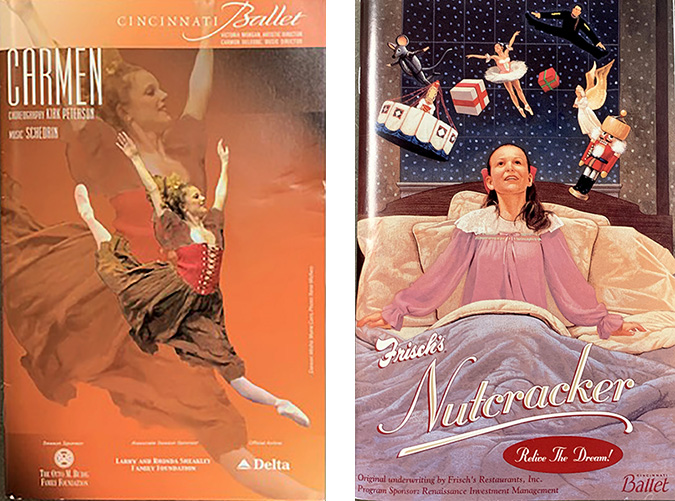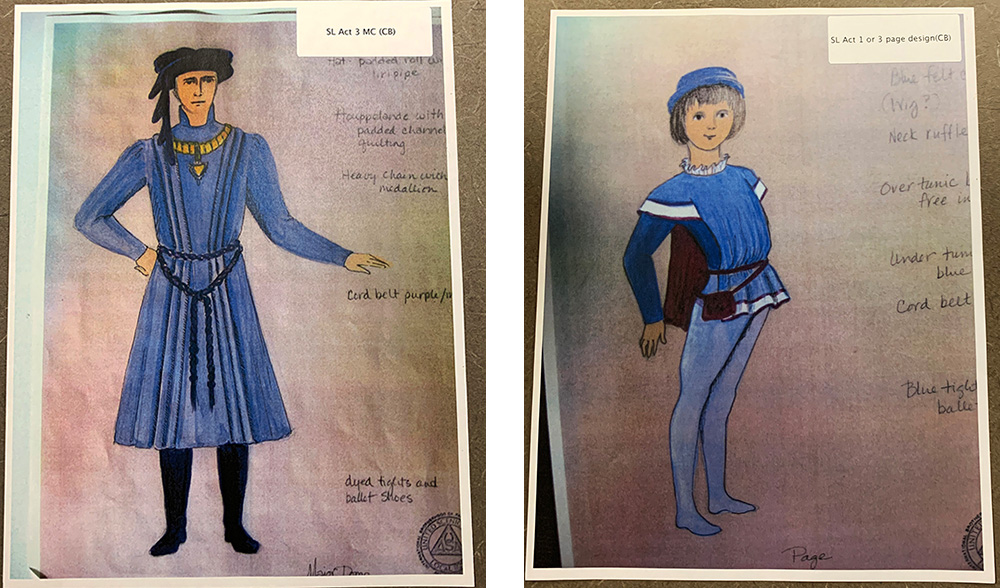By: Savannah Gulick, Archives & Rare Books Library Student Assistant
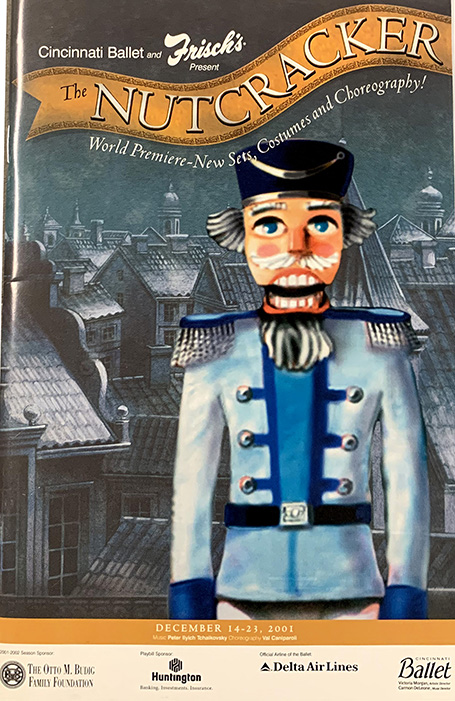 If you have lived around Cincinnati, most likely you’ve heard of Cincinnati Ballet, more specifically Cincinnati Ballet’s annual Nutcracker performance at Music Hall. Every holiday season, the ballet company performs this classic and it truly is a breathtaking. However, there is so much more to the company than just the Nutcracker! For example, when it was founded in 1958, Cincinnati Ballet became the first ever company to exist west of the Alleghenies. It is a fascinating history of this local cultural institution and our holdings of its archive includes a wealth of photos of their productions as well as costume designs and choreography. This most recent accession includes programs for Carmen, The Nutcracker, The Come Together festival, and Swan Lake; costume sketches, choreography, and pieces for Swan Lake and the Nutcracker. The Archives & Rare Books Library holds the ballet’s records extending from 1960 to 2017. and this recent acquisition, accession number US-19-03, consists of 8.75 linear feet and covers 1991 to 2017. Earlier acquisitions in 2010, 2012, and 2016 have the accession numbers of US-10-03 and US-12-07, and US-16-02 and overall the collection consists of 40.32 linear feet of documents, posters,
If you have lived around Cincinnati, most likely you’ve heard of Cincinnati Ballet, more specifically Cincinnati Ballet’s annual Nutcracker performance at Music Hall. Every holiday season, the ballet company performs this classic and it truly is a breathtaking. However, there is so much more to the company than just the Nutcracker! For example, when it was founded in 1958, Cincinnati Ballet became the first ever company to exist west of the Alleghenies. It is a fascinating history of this local cultural institution and our holdings of its archive includes a wealth of photos of their productions as well as costume designs and choreography. This most recent accession includes programs for Carmen, The Nutcracker, The Come Together festival, and Swan Lake; costume sketches, choreography, and pieces for Swan Lake and the Nutcracker. The Archives & Rare Books Library holds the ballet’s records extending from 1960 to 2017. and this recent acquisition, accession number US-19-03, consists of 8.75 linear feet and covers 1991 to 2017. Earlier acquisitions in 2010, 2012, and 2016 have the accession numbers of US-10-03 and US-12-07, and US-16-02 and overall the collection consists of 40.32 linear feet of documents, posters, 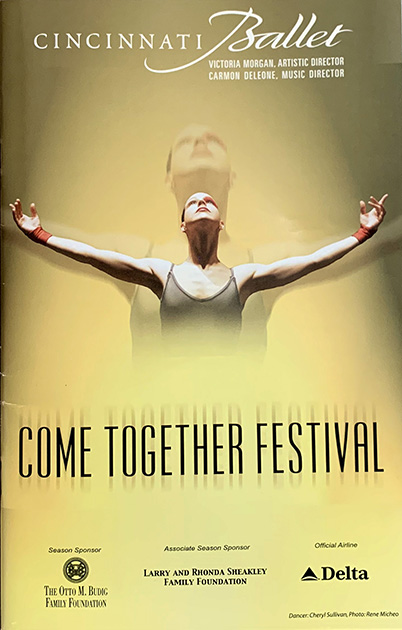 photographs, and programs. The finding aids for the earlier accessions, with details on the contents, can be found online on the UC Libraries Finding Aid website. ARB’s Suzanne Reller has been the contact person for the ballet and she assisted local arts writer David Lyman in his 2013 commemorative history, Cincinnati Ballet Celebrates 50: 1963-2013, from which many of following facts have been taken. The volume is available in ARB’s reference collection and has the call number of GV1786.C5 C55 2013.
photographs, and programs. The finding aids for the earlier accessions, with details on the contents, can be found online on the UC Libraries Finding Aid website. ARB’s Suzanne Reller has been the contact person for the ballet and she assisted local arts writer David Lyman in his 2013 commemorative history, Cincinnati Ballet Celebrates 50: 1963-2013, from which many of following facts have been taken. The volume is available in ARB’s reference collection and has the call number of GV1786.C5 C55 2013.
The company was founded in 1958 by three ballet teachers, Myrl Laurence, Virginia Garrett, and Nancy Bauer, and although it took five years to get everything up and running, over 200 hopeful dancers arrived at the Cincinnati YMCA for auditions in 1963. Only 41 were selected. Debut performances took place at the University of Cincinnati’s Wilson Auditorium in 1964 and 1965. In 1966, the directorship passed on to a young visionary named David McLain, who at the time also headed the Dance Division of UC’s College-Conservatory of Music. CCM provided the new company with the great advantages of studio space for classes and rehearsals, access to talented students, and the use of Wilson Auditorium for performances. The company was renamed “Cincinnati Ballet Company” in 1968.
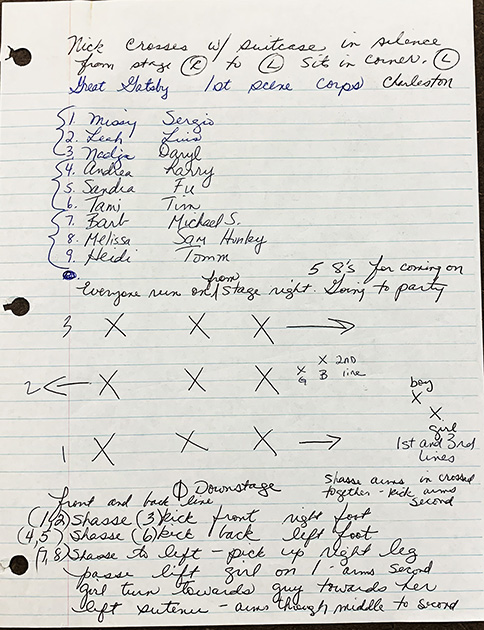 In 1970, the company achieved “true professional status” following the hiring of ten salaried dancers. James Truitte began training the dancers in the contemporary technique created by the American choreographer Lester Horton. Cincinnati Ballet Company earned national recognition for keeping this respected Horton technique alive. However, CBC was still first and foremost a ballet company with classical works in its repertoire. Performances of the classics like Sleeping Beauty and the George Balanchine repertoire now took place in downtown Cincinnati at the Taft Theatre. The Nutcracker, which had its local premier in 1974 at Music Hall, was sponsored by Frisch’s Restaurants, and to the everlasting gratitude of ballet audiences, Frisch’s continues to do so for over 40 years now.
In 1970, the company achieved “true professional status” following the hiring of ten salaried dancers. James Truitte began training the dancers in the contemporary technique created by the American choreographer Lester Horton. Cincinnati Ballet Company earned national recognition for keeping this respected Horton technique alive. However, CBC was still first and foremost a ballet company with classical works in its repertoire. Performances of the classics like Sleeping Beauty and the George Balanchine repertoire now took place in downtown Cincinnati at the Taft Theatre. The Nutcracker, which had its local premier in 1974 at Music Hall, was sponsored by Frisch’s Restaurants, and to the everlasting gratitude of ballet audiences, Frisch’s continues to do so for over 40 years now.
Beginning in 1978, performances were regularly staged in Music Hall and the company’s name was shortened to “Cincinnati Ballet”. Sadly, David McLain passed away in 1984 and his death led the company’s board of trustees to hire Frederic Franklin as Artistic Director for an interim period. Ivan Nagy eventually took over the permanent position in 1986 and officially moved the ballet out of CCM. The company danced full time at Music Hall. The arrival of highly experienced dancers raised Cincinnati Ballet to a new standard of performance as it joined the American Guild of Musical Artists and added the SCPA Dance Department. Nagy left in 1989 and three artistic directors came and went in quick succession. Richard Collins, a British-trained dancer and a director of great promise, was tragically killed in a car accident. Nigel Burgoine succeeded him in 1992 and Peter Anastos in 1994. During his two years in Cincinnati, Anastos created the very successful ballet Peter Pan with an original score by Carmon DeLeone.
Through the great generosity of the Kaplan and Budig foundations, a permanent home was built for the company on Central Parkway at Liberty Street in 1994. Cincinnati Ballet Otto M. Budig Academy was launched in 1996. At last, offices, dance studios, a training school, wardrobe and costume storage, and rehearsal space were all in the same complex. The intimate Mickey Jarson Kaplan Performance Studio was added in 2005. The Aronoff Center for the Arts became the permanent home for the repertoire series of performances and a number of spectacular ballets were 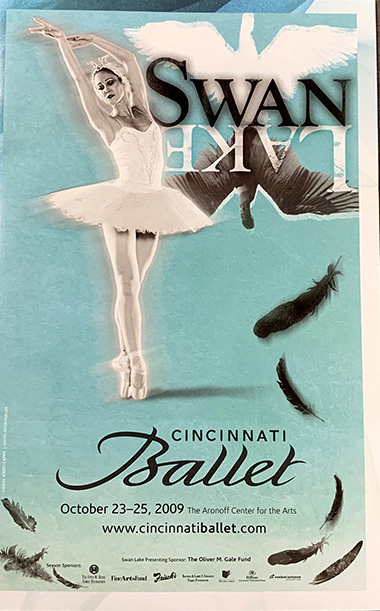 acquired. “Americana” ballets such as Agnes DeMille’s Rodeo, and modern dance pieces by Paul Taylor challenged the dancers and intrigued audiences. In 1996, in an exciting premiere, Balanchine’s full-length Jewels was performed by the company.
acquired. “Americana” ballets such as Agnes DeMille’s Rodeo, and modern dance pieces by Paul Taylor challenged the dancers and intrigued audiences. In 1996, in an exciting premiere, Balanchine’s full-length Jewels was performed by the company.
Victoria Morgan was appointed Artistic Director in 1997 and CEO in 2008. Also in 2008, Devon Carney, a former principal dancer with Boston Ballet, was appointed Associate Artistic Director. Morgan honored the Cincinnati Ballet tradition of performing not only new works, but also keeping the historic repertoire alive and vibrant. A tribute to Frederic Franklin and the Ballet Russe de Monte Carlo in 2002 inspired The New York Times to call the production one of the top ten dance events in the country that season. In the 2007-2008 Season, “a collaboration with The Suzanne Farrell Ballet in the production of Chaconne resulted in the presentation of a joint program, both at The Aronoff Center and Washington, D.C.’s Kennedy Center in 2008” (www.cballet.org). Cincinnati Ballet has continued to push the boundaries of what ballet can be and to draw new and wider audiences with successful live band performances, including Over the Rhine and the legendary Peter Frampton. The 2013-2014 season included the 50th Anniversary Celebration. Following endowments and groundbreaking performances during this season, the Cincinnati Ballet company was “Set to Soar” for future generations.
So much history is involved with Cincinnati Ballet company beyond these highlights. Feel free to stop by the Archives and Rare Books library to learn more about Cincinnati Ballet as well as the other collections in our Urban Studies Archive We are located on the 8th floor of Blegen Library, open Monday through Friday, 8:00 am-5:00 pm. You can also call us at 513.556.1959, email us at archives@ucmail.uc.edu, visit us on the web at http://www.libraries.uc.edu/arb.html, or have a look at our Facebook page, https://www.facebook.com/ArchivesRareBooksLibraryUniversityOfCincinnati


